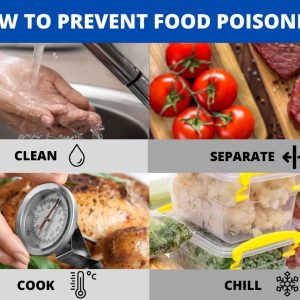In our modern, convenience-driven society, plastics are everywhere—from the tea bags steeping your morning brew to the takeout containers holding your lunch. Emerging research shows that these everyday items may be a hidden source of microplastics that enter our bodies, potentially jeopardizing our health and safety.
The Invisible Threat Lurking in Everyday Items
Recent studies have revealed alarming statistics about microplastic contamination in common food packaging and beverage items. For example, research published in the journal Chemosphere found that typical tea bags made of polypropylene can release up to 1.2 billion microplastic particles per milliliter when steeped in boiling water. Similar investigations have demonstrated that even paper tea bags—with plastic adhesives added to improve durability—can shed billions of particles into your cup. Once ingested, these microplastics are absorbed by intestinal cells and may even enter the cell nucleus, where they can potentially interfere with genetic material.
Plastic takeout containers are another everyday culprit. A study conducted by Chinese scientists reported that high exposure to chemicals leached from these containers—especially when in contact with hot food—correlates with a 13% increased risk of congestive heart failure. The proposed mechanism involves the release of plastic-associated chemicals that trigger gut inflammation and oxidative stress, which in turn damages heart muscle tissue. Given that takeaway consumption has surged by 50% since the pandemic, this emerging evidence raises significant concerns about the long-term health implications of our plastic-dependent lifestyle.
How Do Microplastics Affect Human Health?
Microplastics are not inert; they carry a cocktail of chemicals such as bisphenol A (BPA), phthalates, and per- and polyfluoroalkyl substances (PFAS). These additives are known endocrine disruptors and have been linked to various adverse health effects including:
- Hormonal Imbalances: Chemicals like BPA mimic estrogen and can disrupt normal hormonal activity, potentially affecting reproductive health.
- Inflammation and Oxidative Stress: Both in vitro and animal studies suggest that microplastics can induce cellular inflammation and oxidative stress, contributing to tissue damage and increased disease risk.
- Cardiovascular Damage: Data from epidemiological studies involving over 3,000 participants indicate that frequent exposure to plastic leachates—via takeout containers and other sources—could elevate the risk of heart failure by 13%, with older adults and women being particularly vulnerable.
Moreover, recent investigations have detected microplastics in human blood and even in organ tissues like the brain, liver, and kidneys. Although the long-term consequences of these findings are still being unraveled, the potential for microplastics to interfere with cellular functions and trigger chronic diseases is a growing cause for concern among health and safety experts.

What Can You Do to Reduce Your Exposure?
Given the pervasive nature of plastic in our daily lives, completely avoiding microplastics may be impossible. However, adopting a few safety measures can help mitigate your exposure and reduce potential health risks:
- Switch to Alternatives:
- Tea: Choose loose-leaf tea and brew it with a stainless steel or ceramic infuser instead of using plastic tea bags.
- Food Containers: Use glass or stainless-steel containers for hot foods and beverages rather than plastic ones.
- Avoid Heating Plastics: Refrain from microwaving food in plastic containers or placing hot liquids in plastic takeout boxes.
- Stay Informed: Regularly review product information and opt for brands that explicitly market their packaging as plastic-free or biodegradable.
- Advocate for Change: Support policies and initiatives aimed at reducing plastic production and improving recycling standards to lower the overall environmental load of microplastics.
A Call for Further Research and Regulatory Action
While current studies provide compelling evidence of microplastic exposure and its potential health hazards, many questions remain unanswered. Researchers are still determining how these tiny particles accumulate in the human body over time and what their precise impacts might be on cellular functions. As more data emerges, it is crucial for regulatory bodies to establish standardized testing methods and exposure limits to better safeguard public health.

In the meantime, by making mindful choices in our daily routines and advocating for stronger environmental policies, we can collectively reduce the risk of microplastic exposure. After all, protecting our health starts with recognizing the hidden hazards in the things we use every day.
ALSO READ: Your ‘Natural’ Skincare Products Might Be Hormone Disruptors – What You Must Know











